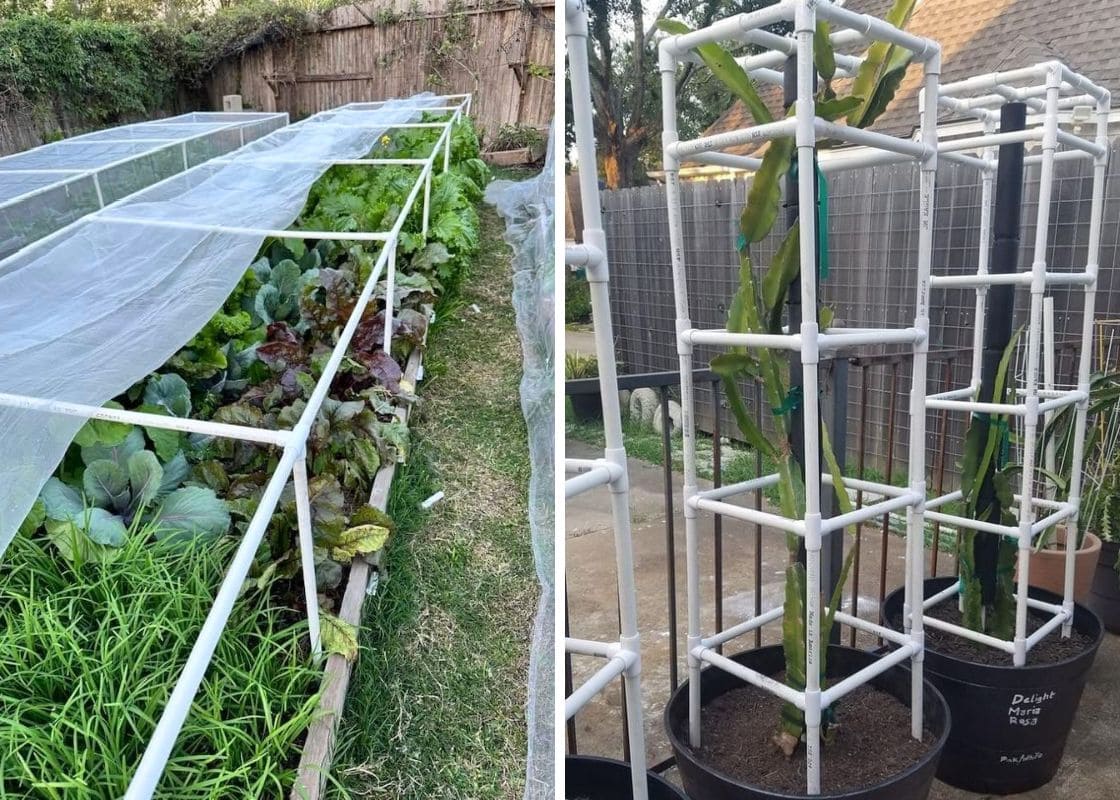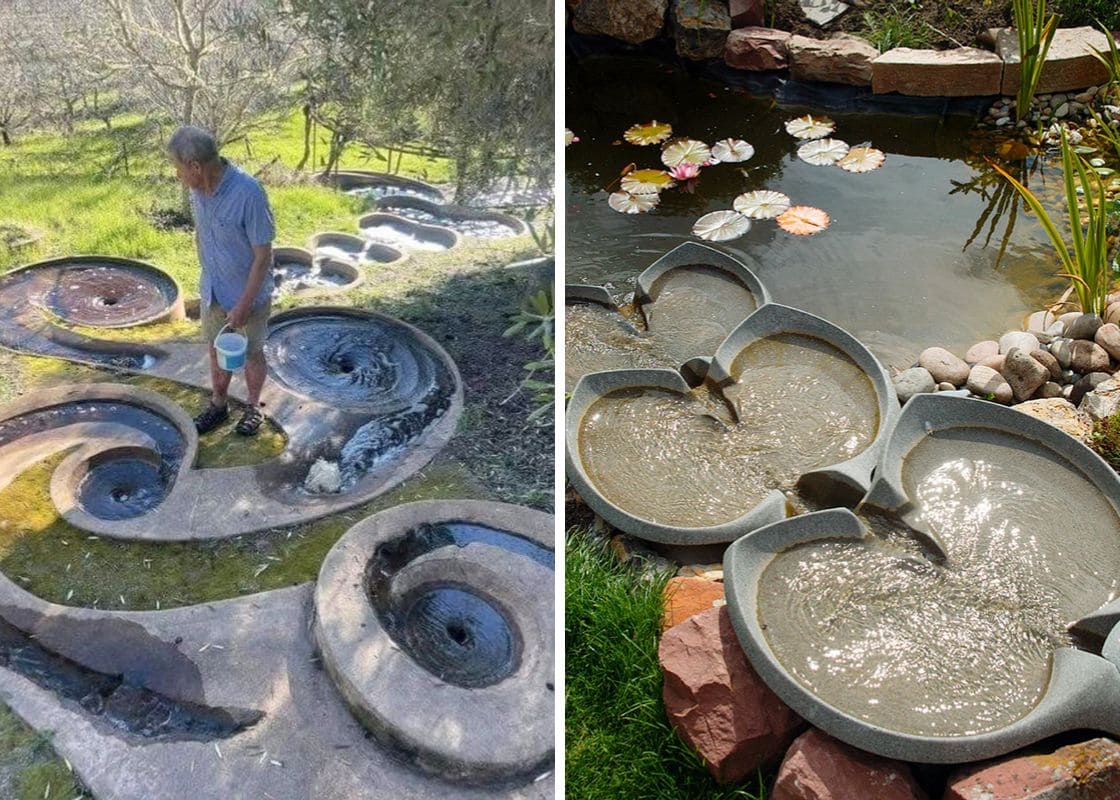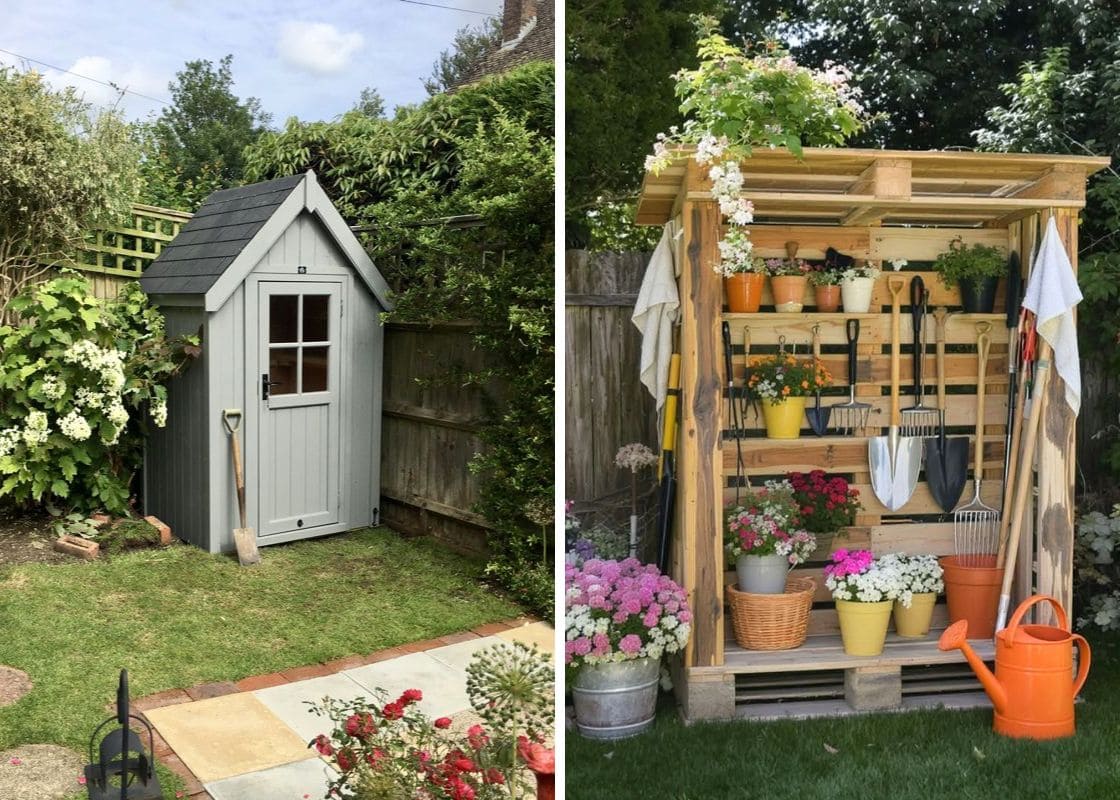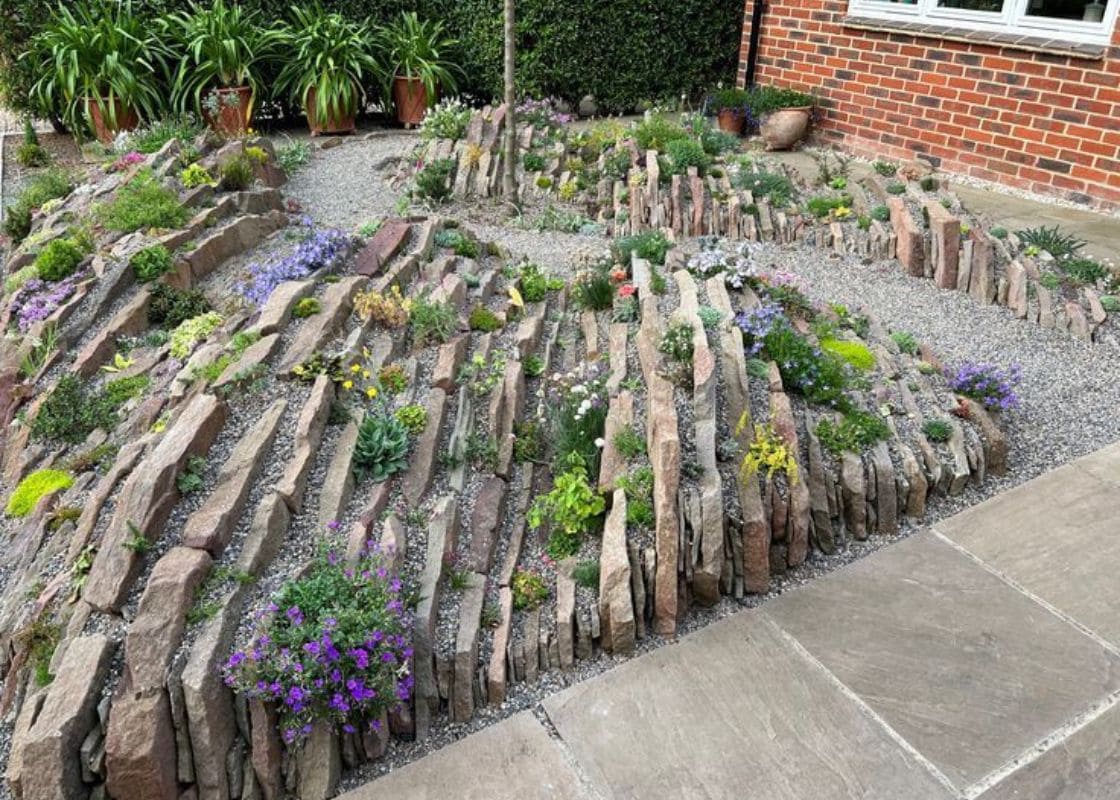Do you know that a rock garden is a beautiful and low-maintenance addition to any landscape?
Featuring rocks, stones, and drought-tolerant plants like succulents and alpine flora, rock gardens create a natural and tranquil setting.
They thrive in well-drained soil and can be designed to fit any space using principles of layout, scale, and balance.
Perfect for sunny or partially shaded areas, rock gardens offer a resilient and visually appealing garden option.
To enhance the beauty and functionality of your rock garden, consider incorporating a variety of plants that thrive in these conditions.
If you are wondering what to plant, follow the suggested plants, then you can elevate your garden’s aesthetic and create a serene and inviting outdoor space.
#1. Sedum (Stonecrop)
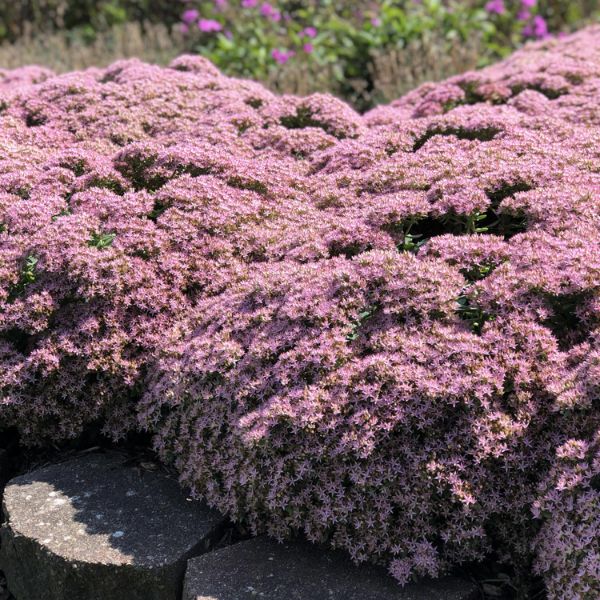
If you feel bored with your empty garden, try to grow Sedum. It develops best on soil that drains well and in full to partial shade.
Its low-growing, spreading growth pattern makes it ideal for ground cover or cascading over rocks and walls.
Sedum gives interest to the garden with its succulent leaves, which come in a variety of shapes.
In late summer, clusters of star-shaped flowers emerge, attracting pollinators and adding a pop of color to the landscape.
#2. Creeping Thyme (Thymus serpyllum)
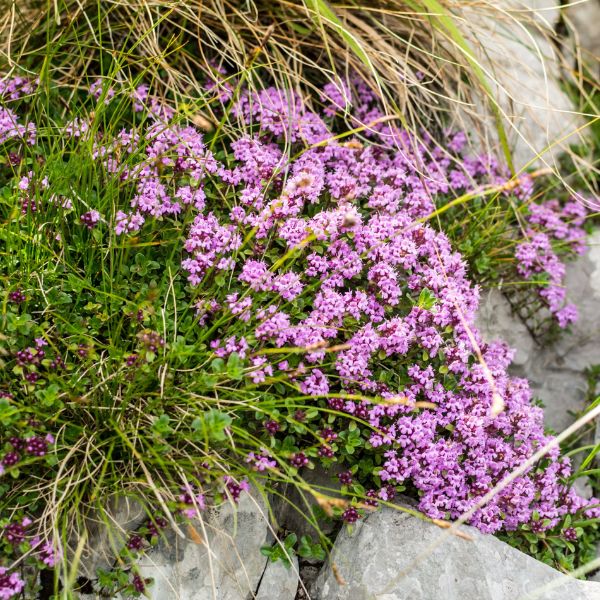
If you are looking for a solution to fill in gaps between rocks or stepping stones, consider creeping thyme. It lives in light and well-draining soil.
Its low, spreading growth pattern forms a dense mat. Also, you don’t need to take much care of this plant and your garden is still great.
Its tiny leaves release a pleasant fragrance. In summer, it produces clusters of small, pink, or purple flowers that attract pollinators and provide a splash of color.
#3. Hens and Chicks (Sempervivum)
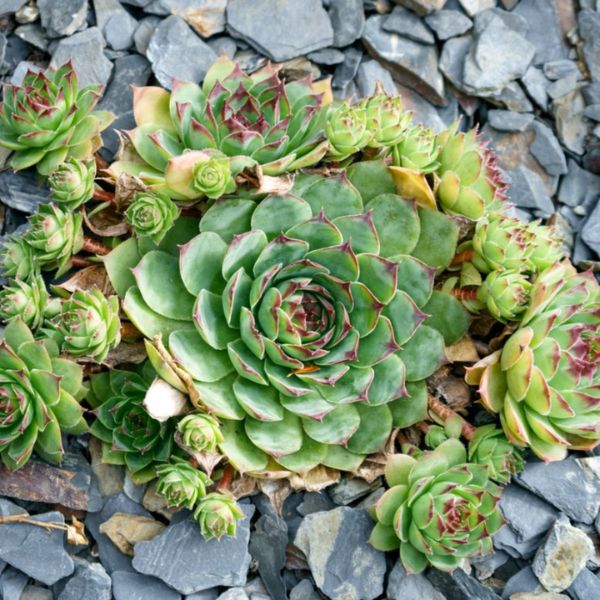
Do you think your garden will be covered by Hens and chicks? They grow in rocky environments with well-draining soil and ample sunlight.
These plants are unique, with each “hen” producing offsets or “chicks” around its base. They prefer slightly acidic to neutral soil and are drought-tolerant once grown.
Hens and chicks are known for their striking, fleshy leaves arranged in tight rosettes, and they produce small, star-shaped flowers on tall stalks in summer.
#4. Dianthus (Carnations)
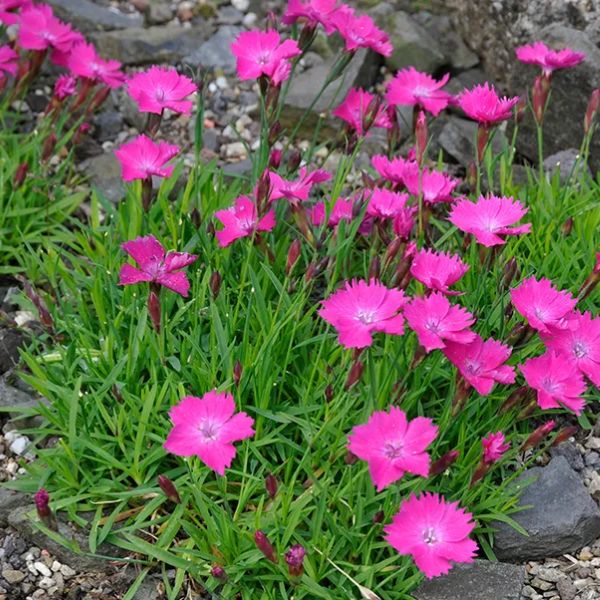
If your garden is full of light, it’s better to grow Dianthus. This plant prefers slightly alkaline soil and is relatively low-maintenance.
It exhibits a clumping growth pattern, forming dense mounds of foliage adorned with slender, grass-like leaves.
Dianthus produces an abundance of fragrant, colorful flowers in various hues, adding vibrant pops of color to the rock garden landscape throughout the growing season.
#5. Alpine Aster (Aster alpinus)
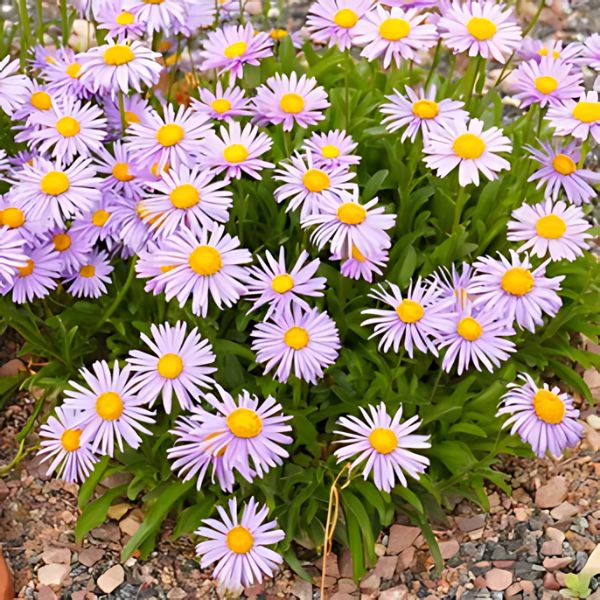
Have you ever thought of adding blue or pink colors to your rock garden? Try Alpine aster, which develops best in well-drained soil and full sun to partial shade.
This plant is renowned for its ability to withstand tough environments and enjoys slightly acidic soil.
Don’t worry if your garden is small because it forms neat mounds of slender foliage. This plant produces daisy-like flowers, adding delightful color from late spring to early summer.
#6. Aubrieta (Aubrieta deltoidea)
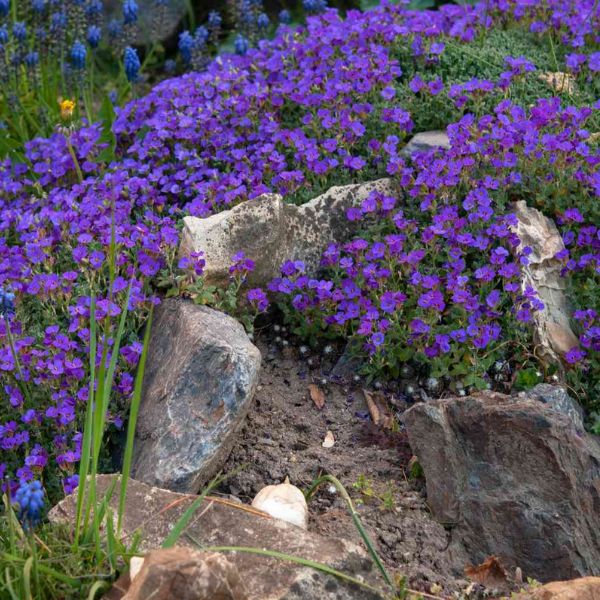
Your garden will be more attractive with Aubrieta. Its trailing growth pattern creates a lush carpet of foliage, perfect for cascading over rocks and edges.
This plant prefers alkaline soil and is drought-tolerant once established.
With its small, leathery leaves and vibrant purple, pink, or white flowers, aubrieta adds a splash of color to the garden in early spring, attracting pollinators and admirers alike.
#7. Moss Rose (Portulaca)
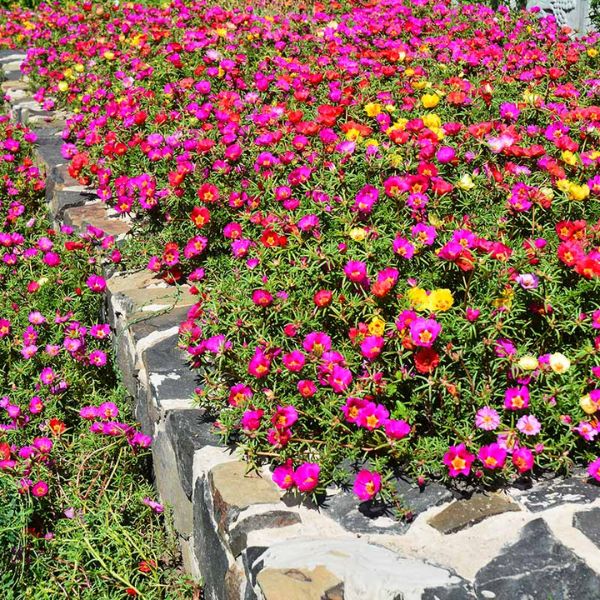
Even when you live in hot, dry conditions and well-drained soil, your garden is still excellent with Moss Rose.
This plant is drought-tolerant and requires minimal maintenance. Its low-growing, trailing habit forms dense mats of succulent foliage, creating a lush carpet effect.
Its fleshy leaves and vibrant, rose-like flowers bloom in various colors, adding a pop of color to the garden throughout the summer months.
#8. Blue Star Creeper (Laurentia)
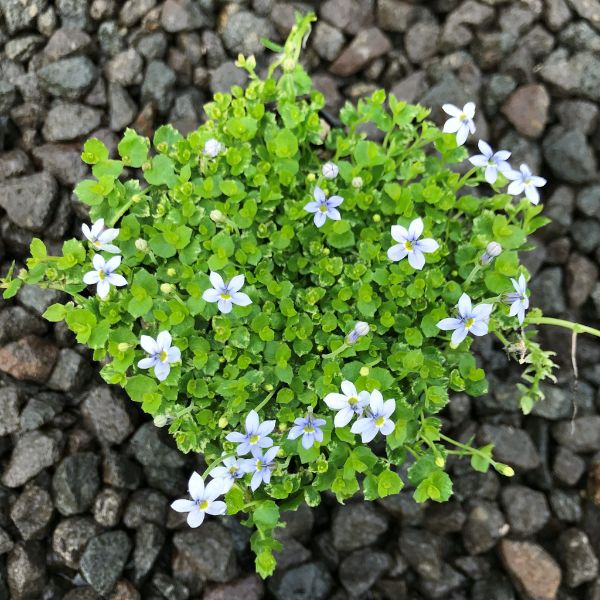
Whether you are fastidious, Blue Star Creeper can conquer your eye. It develops in moist, well-drained soil and partial shade to full sun conditions.
This plant is tolerant of foot traffic, making it ideal for pathways or between stepping stones.
Its spreading growth pattern creates a lush carpet effect. In late spring to early summer, it produces small, light blue flowers that add a touch of charm to the garden landscape.
#9. Rock Cress (Arabis)
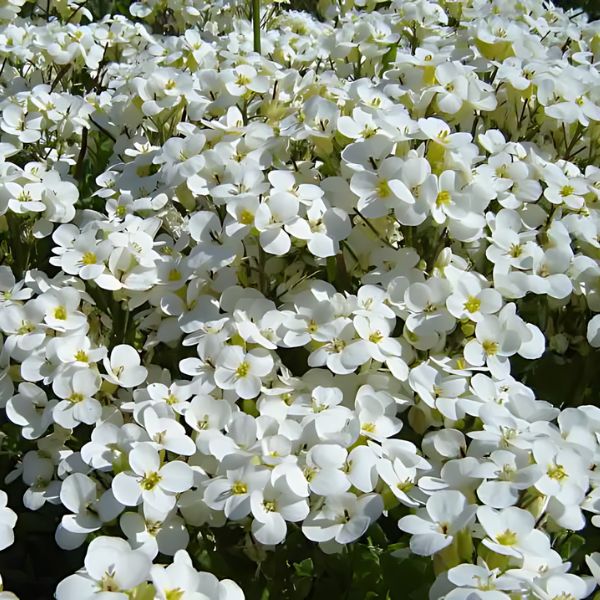
Next time when your friend comes to visit your home, show her your garden with full of Rock Cress.
Improve your rock garden with this plant, which grows in well-drained soil and full sun to partial shade conditions.
With its dense clusters of small, four-petaled flowers in shades of white, pink, or purple, Rock Cress adds a delightful pop of color to the garden from late spring to early summer.
#10. Basket of Gold (Aurinia)

If you want to renew your rock garden and save money, it’s no better than Basket of Gold.
Its mounding growth pattern produces dense clusters of bright yellow flowers, creating a stunning visual display in the garden.
With its drought tolerance and ability to cascade gracefully over rocks or walls, Basket of Gold adds texture and vibrancy to any rock garden landscape, particularly during its springtime bloom.
#11. Saxifraga (Saxifrage)

It’s hard to deny the appealing beauty of Saxifraga. This plant is a hardy rock garden one that thrives in cool, moist environments with well-draining soil.
Its low-growing, mat-forming growth pattern makes it suitable for cascading over rock crevices or edging garden beds.
With its rosettes of small, rounded leaves and delicate, star-shaped flowers in various colors, Saxifraga adds a charming touch to any rock garden, blooming profusely in spring and early summer.
#12. Ice Plant (Delosperma)

Your rock garden will become more attractive once covered by Ice Plant. It is a resilient one that thrives in sunny locations with well-draining soil.
Its trailing growth pattern and succulent foliage create a striking visual effect, cascading over rock walls or spilling from containers.
Thanks to its vibrant, daisy-like flowers in shades of pink, purple, orange, and yellow, your garden will be full of colors from late spring to early fall, being friendly to nature.
#13. Phlox Subulata (Creeping Phlox)
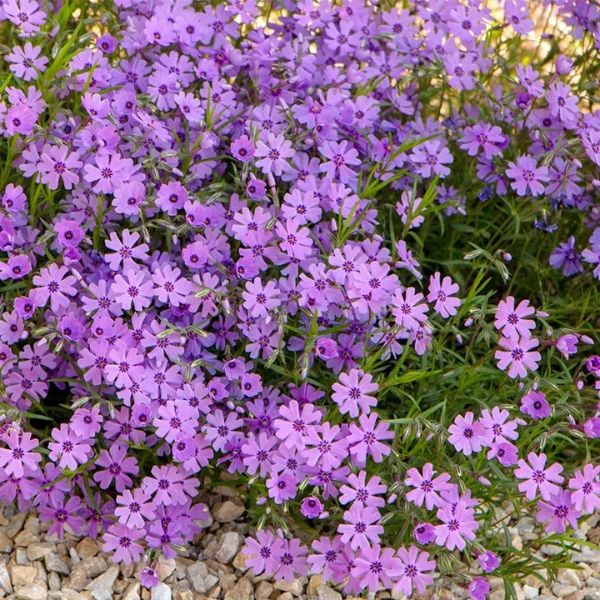
If you live in a North American area, don’t miss out Phlox subulata. This plant prefers full sun exposure and well-draining soil.
Its low-growing, mat-forming growth pattern makes it ideal for ground cover, cascading over edges and spilling between rocks.
With its needle-like foliage and vibrant flowers in shades, it creates a stunning carpet of color in the garden from early to mid-spring, attracting pollinators like bees and butterflies.
#14. Dwarf Iris
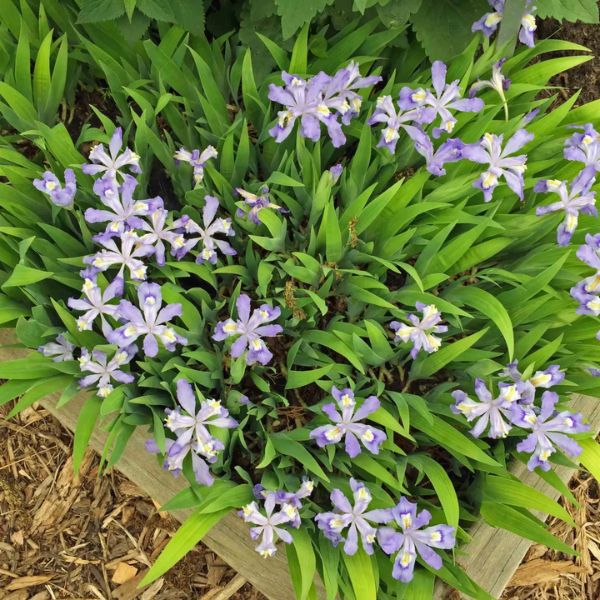
Dwarf Iris is one of the top choices if you live in full sun to partial shade with well-draining soil.
With their low maintenance needs and stunning visual appeal, this plant is a must-have for any rock garden enthusiast.
Its compact growth pattern creates a delicate appearance, improved by vibrant blooms. These flowers emerge in early spring, adding various colors to the garden.
#15. Rock Jasmine (Androsace)
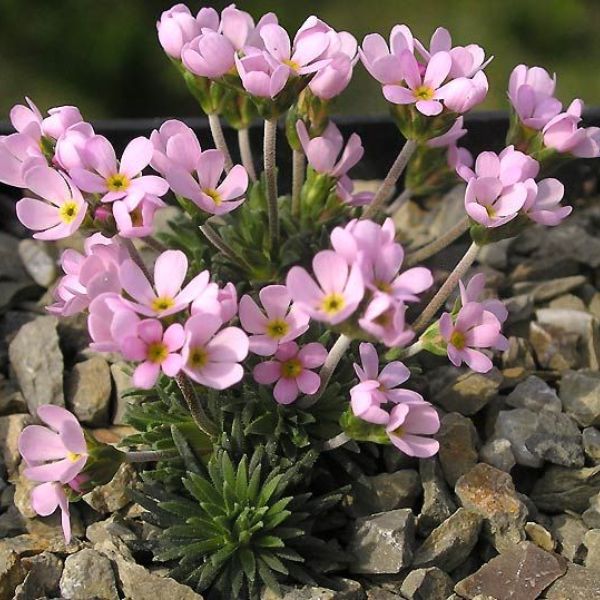
If you want to make your garden exotic, try to grow Rock Jasmine. This plant thrives in alpine environments, favoring cool temperatures and well-drained, gritty soil.
With tiny, star-shaped flowers in shades of pink, white, or purple, anyone who visits your home must be surprised to shout: “Wow, this is great!”
These delicate blooms appear in early spring, adding a touch of beauty to rocky landscapes. With its resilience to harsh conditions, it is a perfect addition to any rock garden.

It’s great to see these plants in your garden. Rock garden plants show your lifestyle and love for nature.
Besides these ideas, Garden and Crafty suggests many other ways to enhance your outdoor space. Don’t miss out!

